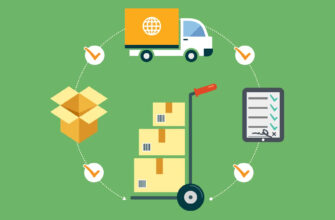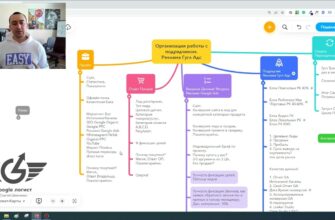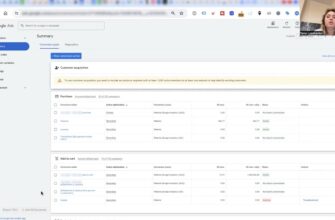- Why is it necessary to keep track of goods in an online store?
- What is required to properly organize inventory management for an online store?
- Structured catalog
- Unique identifiers
- What methods of inventory management do online stores use?
- With regular inventory
- Advantages
- Disadvantages
- With periodic inventories
- Pros
- Cons
- FIFO (First In, First Out)
- Advantages
- Disadvantages
- LIFO (Last In, First Out)
- Advantages
- Disadvantages
- Average cost
- Pros
- Cons
- Weighted average cost
- Advantages
- Disadvantages
- How can you keep track of inventory in an online store?
- Manually
- In the spreadsheet
- In the CRM system
- In the ERP system
- What requirements must a program for automating inventory management meet?
Tracking goods movement for an online store is one of the most important tasks. Without a high-quality tracking system, a company risks encountering a multitude of problems, including delays in processing orders, confusion, and customer dissatisfaction. This becomes particularly noticeable as sales volumes grow.
Essentially, inventory management involves tracking the movement of each unit of product at all stages—from purchase and placement in storage facilities to transfer to the buyer. It also covers cases of transferring stock between warehouses and processing returns from customers.
At the initial stage, when there are only a few products, it seems that it is not necessary to know how to keep track of goods in an online store. But as the product range expands, simple tools like Excel become insufficient. Changes in stock levels occur almost every second, and it becomes increasingly difficult to keep track of them manually.
How many calls and sales will I get by ordering contextual advertising from you?
I need to calculate the conversion of my website Describe
the task
in the application
Calculate potential ad revenue Google
contextual advertising calculator
Why is it necessary to keep track of goods in an online store?
- Establishing cooperation with suppliers. It is not enough to simply find reliable suppliers with high-quality products. It is also necessary to determine the optimal frequency and volume of purchases. To do this, you need to clearly understand how quickly stock levels are depleted and replenished.
- Combating theft. Shortages of cash in cash registers or missing items from the warehouse are often caused by dishonest staff. If you keep stock records in your online store, you will be able to quickly identify such incidents and take action. Even the mere existence of such a system often helps to prevent abuse.
- Demand analysis. Availability data will clearly show which categories, brands, and models are in highest demand. Based on this information, you can optimize your website structure and plan your purchases and advertising campaigns more accurately.
- Optimization of warehouse stocks. Thanks to accounting, you can avoid both overstocking and shortages of popular items. This is especially important when working with goods that have a limited shelf life. Optimal stock levels allow you to save on rent and minimize losses from writing off spoiled products.
- Cash flow control. Uncontrolled purchases without regard to the budget are a direct path to cash flow gaps and working capital problems. Competent accounting allows you to plan purchases in accordance with current financial capabilities, avoiding deficits.
- Compliance with legal requirements. For many categories of sole proprietors, inventory taking is a requirement under Ukrainian law, specifically Article 3, paragraph 13. In particular, this applies to VAT payers, sole proprietors under the general system, as well as entrepreneurs under the single tax system who trade in household appliances, jewelry, and medicines. Fines are imposed for failure to keep records.
What is required to properly organize inventory management for an online store?
To keep accurate inventory records in an online store, it is essential to consider the following:
Structured catalog

It should have a hierarchical structure, where products are divided into categories and subcategories. This will greatly simplify navigation and searching for the right items. In addition, this division will facilitate the collection and analysis of information broken down by individual product groups.
It will also be necessary to ensure that all transactions involving commodity items are recorded in the system in a timely manner. When products are received, it is necessary to draw up inventory documents, and when they are sold, it is necessary to make timely write-offs. This will allow you to maintain up-to-date information about the availability and accessibility of products for buyers.
Unique identifiers
To keep track of each item, you need to assign a unique ID to it. This will allow you to track the movement of each individual item on the website.
Product names are not suitable as identifiers, as they may be repeated for items of different colors or sizes. It is much more reliable to use unique codes. Here are the three most common options:
- Barcode. This is a digital code in the form of vertical stripes, which is usually already printed on the packaging during the production stage. It is unique for each product and can be easily read using a scanner.
- SKU (Stock Keeping Unit). An alphanumeric code that can be used as a replacement for barcodes. SKUs can be repeated for different variations of the same product, unlike barcodes. For example, T-shirts of different sizes (M, L, XL) can be assigned the same SKU. This option is convenient when there is no physical access to the product, as in the case of dropshipping.
- ID. This is a unique identifier that the CMS automatically assigns to products when they are added to the website. It is usually hidden from visitors and serves to synchronize information between the product database and the store’s website.
What methods of inventory management do online stores use?
Today, businesses use several methods to keep track of goods in an online store’s warehouse. Each method has its own characteristics, advantages, and disadvantages, which we will examine below.
With regular inventory

The essence of this method is to track inventory levels in real time. To implement this approach, you will need a comprehensive automated system that is integrated with all work processes.
It typically includes barcoding, RFID tags for tracking the movement of product units, and software for analyzing the information collected.
Regular inventories ensure high accuracy of accounting. Even minor discrepancies between actual balances and system data will be promptly identified and eliminated.
Advantages
- You receive an up-to-date summary of products at any time;
- The risks of shortages or overstocking are reduced.
Disadvantages
- The implementation process can be tricky and might cost extra, especially for smaller stores.
With periodic inventories
The method involves physically counting the inventory in the warehouse at fixed intervals, usually every month or quarter. The final data is compared with the results of previous inventories to identify any discrepancies.
This approach may be optimal for small and medium-sized online stores with limited inventory. It is also effective if you predominantly sell goods with a long shelf life.
Pros
- No special skills or complex equipment are required to perform a physical recount;
- The ability to adapt the inventory schedule to the specifics of the business and available resources;
- Regular recounts help identify accounting errors, shortages, and theft.
Cons
- The recalculation process usually takes a long time, especially when there is a large volume of inventory;
- There is a high risk of errors due to human factors when counting manually;
- Inventory requires suspending other business processes (shipping goods, accepting returns, etc.), which is critical for large stores;
- The information provided does not reflect the situation in real time. The longer the intervals between recalculations, the greater the discrepancy with the current state of affairs.
FIFO (First In, First Out)
An inventory method whereby products that arrived at the warehouse earlier must be sold first. The main task of FIFO is to control storage times at the warehouse and the turnover of goods in general.
This method is most effective for online stores with high product turnover and stable prices. For example, for online grocery stores or clothing and footwear stores. However, FIFO is not suitable for goods that are subject to rapid obsolescence (such as gadgets or electronics).
Advantages
- Compliance with market logic. Buyers usually expect stores to sell goods in the order they arrive, rather than holding onto old stock.
- Risk minimization. FIFO encourages faster product sales and discourages storing products in warehouses for too long.
- Ease of implementation. The method is intuitive for staff and does not require significant investment.
Disadvantages
- The impact of inflation on financial statements. Items purchased earlier have a lower cost price. The margin on their sale may be overstated, distorting the true state of affairs.
- You may miss out on potential profits. Sometimes FIFO forces you to sell less popular items at the expense of profit. For example, you may prioritize older generation smartphones without receiving additional margin from the sale of new products.
- Unstable indicators. Fluctuations in purchase prices lead to “jumps” in reporting, making planning difficult. For example, a batch of video cards purchased at a high price may result in losses when the market subsequently declines.
LIFO (Last In, First Out)
It is both an alternative and the opposite of FIFO — “first in, first out.” If you organize inventory accounting in an online store using this method, you must also take into account the time of arrival of products at the warehouse, but with the opposite logic. LIFO is often used by online stores that work with goods that quickly become obsolete or are subject to strong price fluctuations.
Advantages
- Reduced tax burden. In inflationary conditions, LIFO can understate gross profit in financial statements, which will lead to a reduction in tax liabilities.
- More accurate assessment. This approach helps to obtain a realistic picture of the cost price of goods in storage, which is important when prices are unstable.
Disadvantages
- Risk of product range obsolescence. Products from old shipments can remain unsold for a long time, losing liquidity and posing a threat to profits.
- Complexity of accounting itself. The need to constantly update data on recent purchases can complicate inventory management.
Average cost
The main thing here is to determine the weighted average price of the item for the selected period. This approach is most often used for product groups with similar characteristics. It allows you to accurately estimate the total value of your inventory.
How many calls and sales will I get by ordering contextual advertising from you?
I need to calculate the conversion of my website Describe
the task
in the application
Calculate potential ad revenue Google
contextual advertising calculator
Pros
- Convenient tracking of procurement costs. By using an average price, you can control the costs of additional purchases even when supplier prices are unstable.
- Simplification of accounting processes. Compared to FIFO and LIFO, this requires significantly less work, as the implementation itself is simpler.
Cons
- Loss of accuracy during periods of high price volatility. When the market is volatile, the average price will only give a rough idea of the real situation.
- Difficulties with an extensive product range. The more diverse the product range, the more difficult it is to determine an adequate average price.
Weighted average cost
It involves calculating the average cost of all purchased items, taking into account the specific quantity in each batch. The following formula is used to calculate the indicator:

Three key indicators are used in the process:
- The number of goods in each individual purchased batch;
- The cost of an item in each batch;
- Total quantity of products across all batches.
Advantages
- Higher accuracy of inventory valuation compared to LIFO;
- Ability to account for price fluctuations between different batches.
Disadvantages
- More labor-intensive calculations, especially if purchases are made frequently but at different prices;
- Low stability of indicators due to constant recalculation of the average price.
How can you keep track of inventory in an online store?
To effectively keep track of goods in an online store’s warehouse, you can use several different tools. The choice is quite wide: from the simplest methods to complex software solutions.
Manually
One of the basic options is to keep records in notebooks or journals. All transactions involving goods are recorded manually in them: receipts, shipments, returns, and write-offs. This method is often used by small stores in the early stages.
However, as the range and number of operations grow, manual accounting becomes too labor-intensive, which can lead to errors. In addition, the data in the logs does not always reflect the actual situation in the warehouse at the moment.
Therefore, even if you started out keeping records in a notebook, it makes sense to switch to more technologically advanced methods as your business grows. This will save time, reduce errors, and allow you to see up-to-date balance information in real time.
In the spreadsheet
If you have already mastered manual inventory management, you can move on to the next level and start using spreadsheets. This is a much more modern way of organizing inventory management in an online store, allowing you to partially automate processes.
For example, you can use separate tables in Excel or Google Sheets documents to track income, sales, and current balances. All indicators will be automatically calculated and updated according to formulas. Cloud services such as Google Sheets allow you to organize collaborative work online.
However, this method also has limitations:
- It does not allow you to fully automate processes and link them to other store tasks. Data often has to be duplicated manually between different files and systems.
- An open data storage format increases the risk of errors and accidental changes. Unlike specialized programs, spreadsheets do not have strict rules for filling in and checking data.
Therefore, even if you are just starting a business, spreadsheets are unlikely to be the best option for accounting. Most likely, their capabilities will quickly become insufficient, and you will need to switch to more advanced tools.
In the CRM system
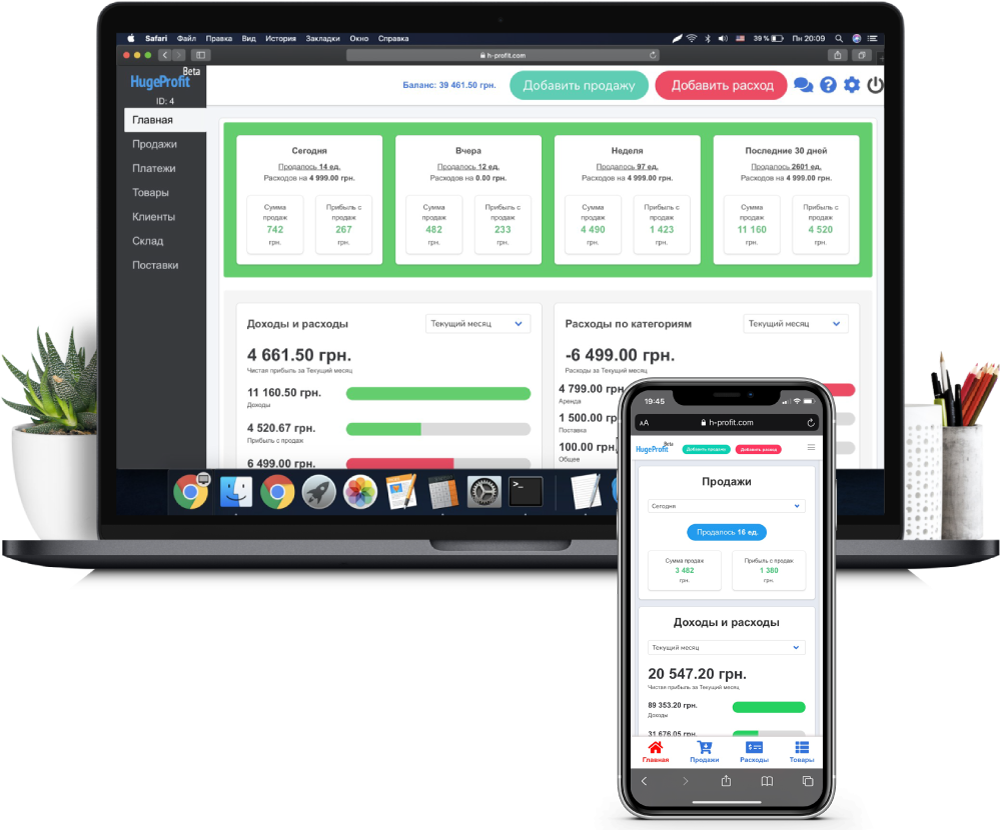
Although the main task of such systems is sales management, most developers additionally incorporate warehouse accounting and even company cash management capabilities into them. This is done for two reasons:
- Keeping track of all indicators in the CRM interface provides a comprehensive overview of the state of affairs and simplifies control over the business as a whole.
- Additional warehouse accounting modules increase the value of CRM in the eyes of online store owners.
CRM systems from Ukrainian developers, such as KeepinCRM, SalesDrive, Skynum, and KeyCRM, are perfect for keeping track of goods. They allow you to keep warehouse records and manage orders and finances in one place.
In the ERP system
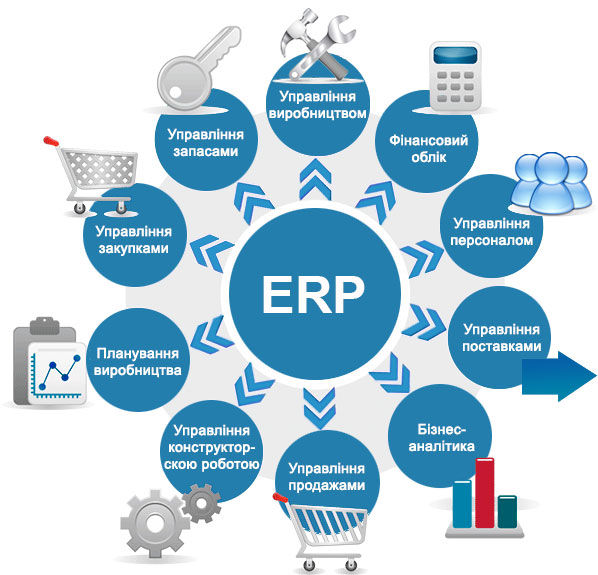
This is the most advanced tool, whose name comes from the English abbreviation “enterprise resource planning.” Such systems allow virtually all business processes to be conducted through a single platform.
ERP systems were originally created for large companies, but since the 2000s, they have become available to smaller businesses as well. Nowadays, such accounting programs can be found everywhere — online and offline, in niche online stores and large retail chains.
There are many ERP systems available, differing in functionality and price. Each of them provides basic accounting (i.e., receipts and write-offs) and allows for basic sales analysis. Additionally, they may offer tracking of funds, customer bases, and even company employees.
The most important aspect of working with an ERP platform for an online store is integrating the system with the marketplace website itself. This enables automatic synchronization of inventory data and transfer of orders between systems. This ensures continuity of accounting.
What requirements must a program for automating inventory management meet?
If you plan to keep track of your product range in an online store, you will need to ensure that the chosen program is as useful as possible. To do this, it must meet a number of key requirements:
- Ease of implementation and use. An intuitive interface will reduce employee training time and minimize errors in their work. Therefore, choose solutions with well-designed ergonomics, even if they are slightly inferior in terms of functionality.
- Prompt technical support, preferably 24/7. After all, if something goes wrong, downtime can be costly for a business. Ask how quickly the support service responds to requests.
- Data import capabilities. If you have a large product range, manually adding items will be too labor-intensive. Therefore, check whether the system supports bulk uploading of information from Excel, CSV, and other popular formats, as well as automatic API exchange.
- A convenient reporting system. You should always have up-to-date information on balances, goods in transit, returns, etc. at your fingertips. This information should be detailed, for example, by reason for return — defects, delivery problems, etc. This will allow you to see the full picture and make quick management decisions.
- Integration with existing systems, primarily CRM. If your inventory management software cannot exchange data with CRM, this will significantly reduce the effectiveness of both systems.





